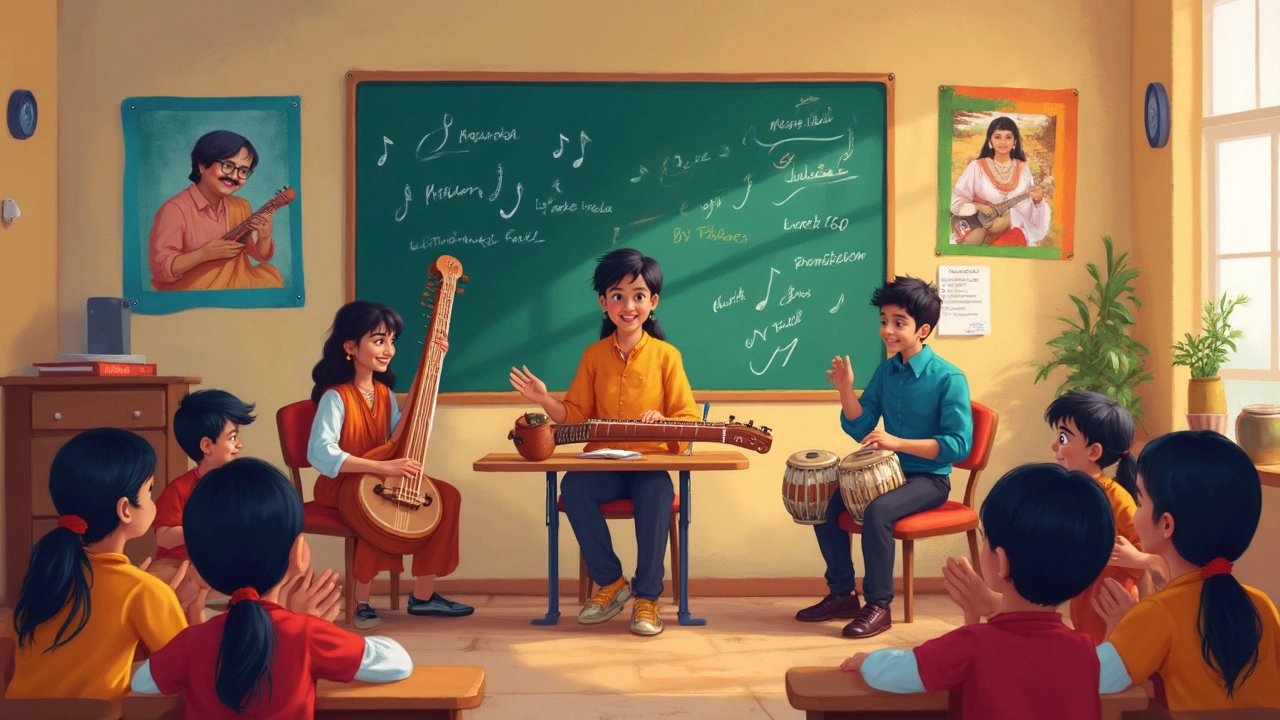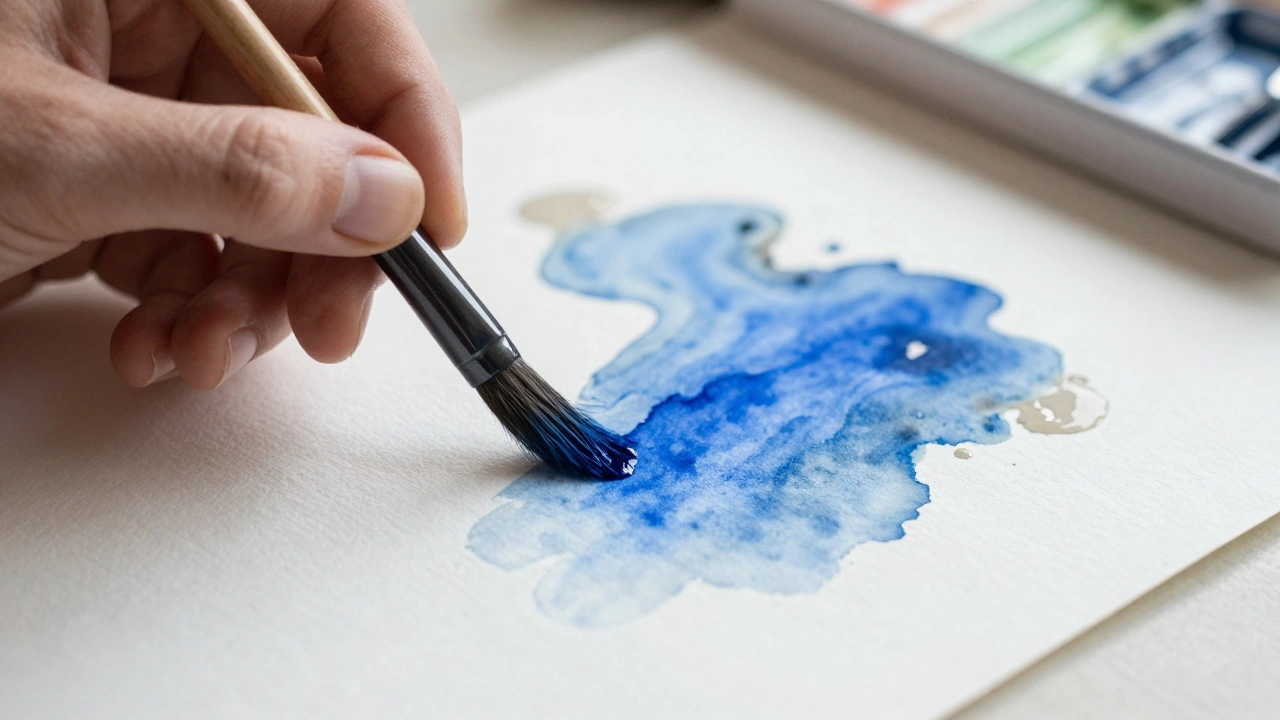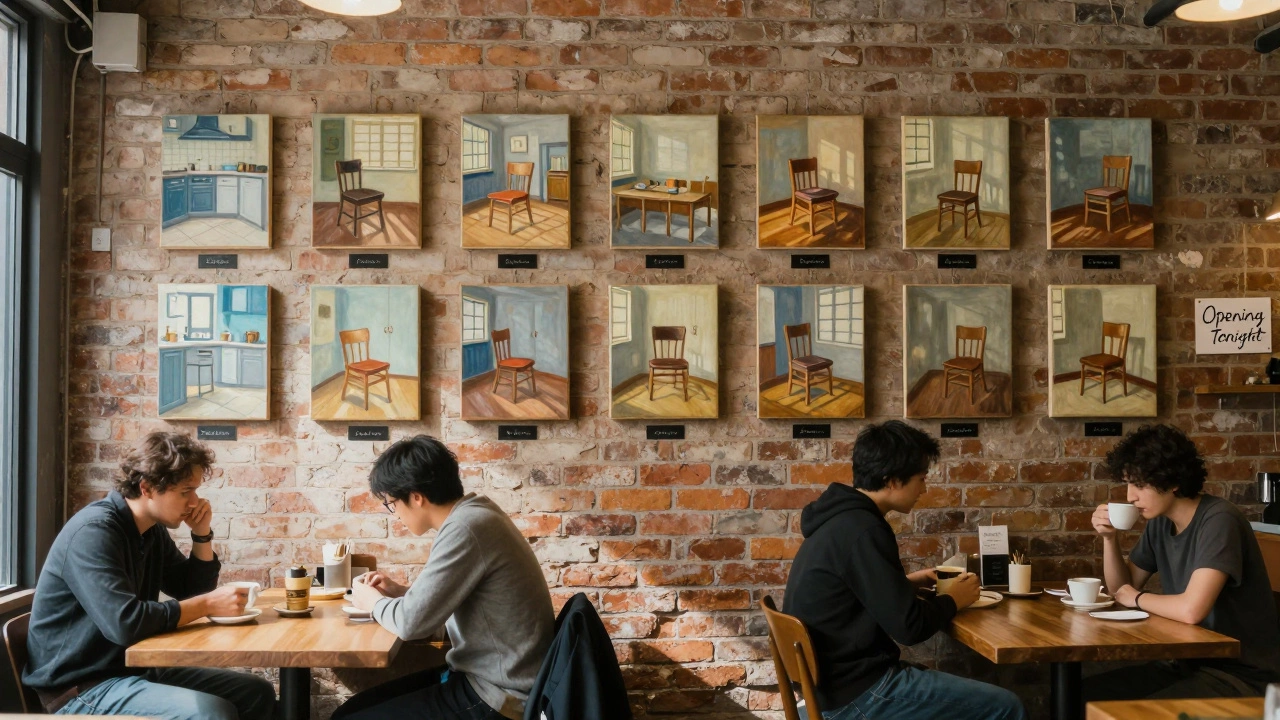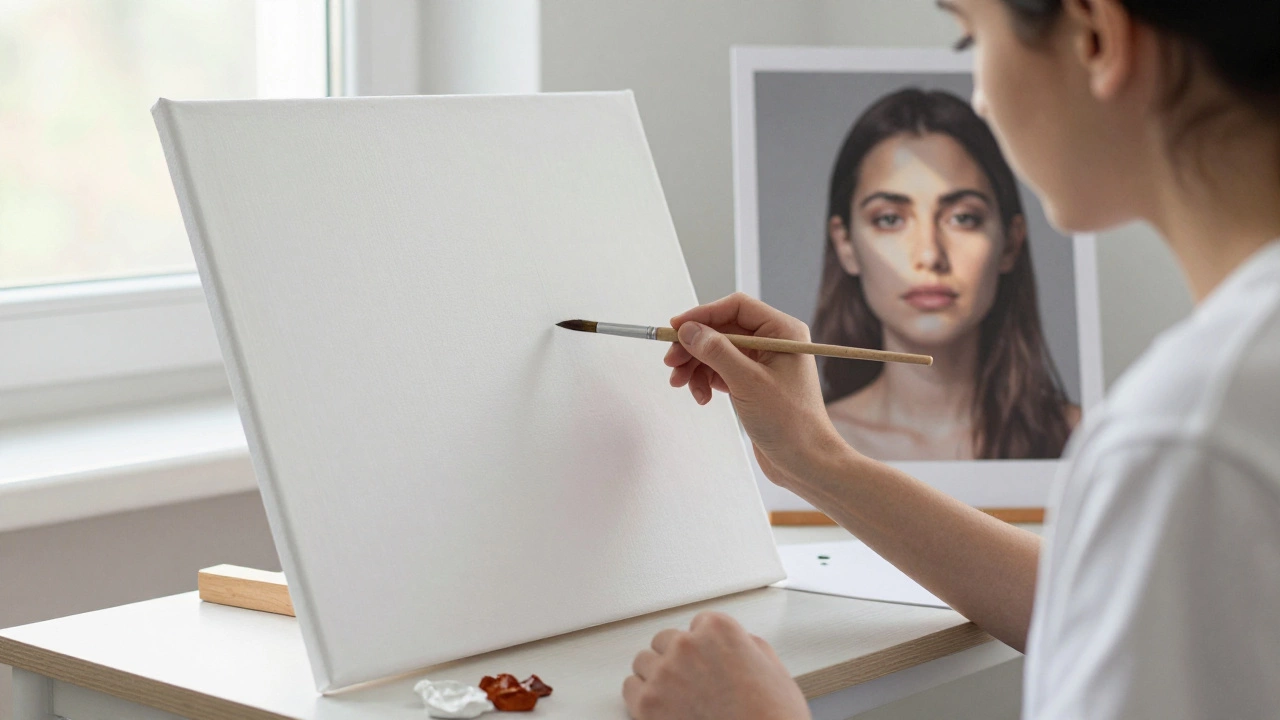Ever wondered what music actually is? It feels simple when you listen to your favorite song, but if you try to explain it, things can get confusing. Music isn’t just random sounds—there’s actually a lot going on!
The cool thing is, you don't need a fancy dictionary definition to get the idea. Music is basically a bunch of sounds put together in a way that makes people feel something. Sometimes that “something” is happiness, excitement, or even comfort on a bad day. Why do we tap our feet to a beat or sing along in the shower? It’s because our brains love patterns, especially ones made out of sound.
If you pay close attention, you’ll start to notice music is everywhere—not just on your playlist or in movies. Open a window and listen. Maybe you’ll hear birds singing, or people clapping at a birthday party next door. That's music too, in its own way. It’s about rhythm, melody, and emotion connecting us all together.
- Defining Music in Simple Terms
- The Building Blocks of Music
- Why Music Matters to Us
- Music in Our Daily Lives
- How to Start Exploring Music Yourself
Defining Music in Simple Terms
So what exactly counts as music? It’s actually pretty easy to wrap your head around. Music is sound that’s put together in a way that people recognize, remember, and usually enjoy. It’s not just any noise, though—there’s some kind of plan behind it. Even the simplest song has a structure so our brains can follow along.
The biggest parts of music are sound, timing, and feeling. That means there’s often a steady beat (like clapping or drumming), and usually a melody (the part you hum or whistle). Sometimes music has words, but it doesn’t need them. For example, a piece played only on piano without anyone singing is still music.
Here’s what separates music from just random noise:
- Music uses patterns, like beats and repeated tunes.
- There’s usually some sort of emotion or message, even if it’s just to help you dance or relax.
- It’s made with intent, not just by accident. Someone meant for it to sound that way.
- It’s created using instruments, voices, or even things like computer programs.
Did you know that every culture in the world has its own music? Scientists have actually found ancient flutes made from animal bones, which means humans have been making music for at least 40,000 years! This shows music isn’t just fun; it’s something wired into us as humans.
No matter where you’re from, music speaks a language everyone gets—even if you can’t understand the words. That’s why it pops up everywhere: sports games, cartoons, video games, and family parties. It connects people in ways nothing else can.
The Building Blocks of Music
Music isn’t just a blur of sounds—there are clear pieces that come together to make what you hear in any song or tune. Think of these as the basic ingredients that make up your favorite dish. If you know the building blocks, it’s way easier to spot them in real music. Let’s break it down.
Music usually has four big parts: melody, rhythm, harmony, and dynamics.
- Melody: This is the part you end up humming or singing along to. It’s a mix of notes played one after another in a way that sounds good. The "Happy Birthday" song? That’s a melody you probably know by heart.
- Rhythm: This is the beat or the timing. It’s what makes you want to clap your hands or nod your head. Without rhythm, songs feel lifeless and hard to follow. Try tapping your fingers along to your favorite song's beat—yep, that's rhythm in action.
- Harmony: When two or more notes play at the same time and sound nice together, that’s harmony. It’s what makes music richer. Think about when people sing together but not on the exact same note—one might be higher or lower. That’s harmony teaming up with melody.
- Dynamics: This is all about how loud or soft the music gets. It keeps things interesting. When the music gets super quiet and then suddenly loud, you feel that change, right? That’s dynamics working its magic.
On top of these, instruments and voices use things like tempo (how fast or slow the music goes) and texture (how many instruments or voices are playing at once) to add flavor to music. For example, an orchestra sounds really full because lots of instruments play together, while a singer with just a guitar feels more simple and clear.
If you want to spot these ingredients in real life, try listening to a simple song and notice which part grabs your attention. Is it the catchy tune, the beat, or the background chords? Next time you play a song, see how these main building blocks show up. You'll start to hear music in a whole new way.
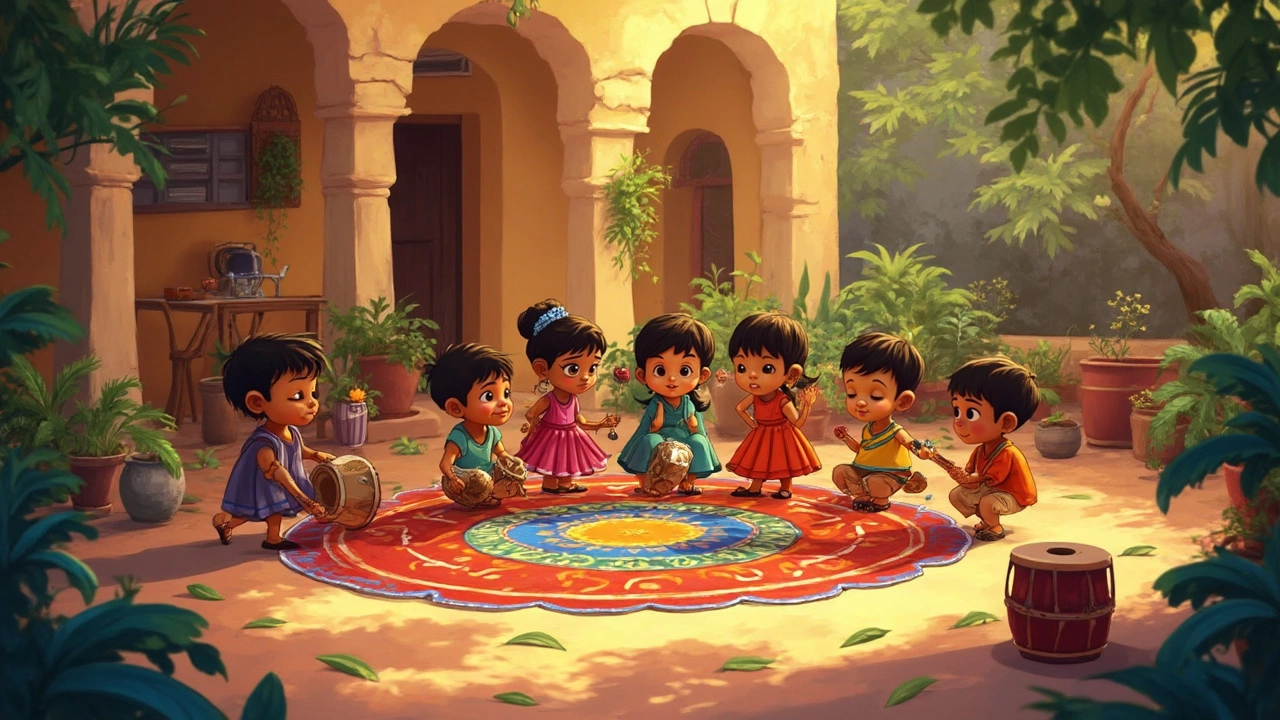
Why Music Matters to Us
Music isn’t just for passing the time. It does a lot for our minds and our lives. Scientists have actually found that listening to music can boost your mood, help you focus, and even reduce stress. There’s a reason people listen to certain songs before a big test or while working out at the gym—the right tunes can give your brain a kickstart.
Here’s something wild: your heart can actually start to beat in time with the rhythm of the music you’re listening to. That’s why slow music feels relaxing and fast beats can make you want to get up and dance.
Schools play music during assemblies, sports games, and even before exams. There’s a good reason for that. Research from the University of Helsinki showed that students who played an instrument scored higher on memory tests. So, learning about music isn’t just about notes and instruments—it’s helping your brain get stronger, too.
Check out this quick snapshot below to see how music affects us:
| What Music Does | How It Helps |
|---|---|
| Relieves Stress | Slows heart rate, lowers anxiety |
| Boosts Memory | Helps you remember facts, improves focus |
| Brings People Together | Makes events more fun, creates friendships |
| Increases Motivation | Makes boring tasks more enjoyable |
Feeling down? A lot of people make playlists for different moods—one for when they’re happy, another for when they’re sad or stressed. This isn’t just a trend, it works. A 2022 survey with over 2,000 teenagers found that more than half turn to music first when they need a mood boost.
Getting involved in music, whether it’s singing, listening, or playing an instrument, connects you with others, too. Think about concerts, school choir, or even just sharing a song with a friend. Music is a social thing, not just background noise. Next time you’re feeling stuck, try putting on your favorite track—you might be surprised how much it helps.
Music in Our Daily Lives
Music pops up in places you probably don’t even notice. It’s not just something you play on headphones or hear during music class. You find music in video games, TV commercials, shops, elevators, sporting events, and even in the ringtone of your phone. It’s woven into so many everyday moments that life would feel pretty weird without it.
Ever noticed how movies feel ten times more exciting or scary with background music? That soundtrack actually helps your brain feel the mood. It’s not just movies, though. Fast-food places often play energetic music to get people to eat and leave faster, so there’s more space for new customers. Supermarkets pick mellow tunes because they want you to feel relaxed and spend more time shopping.
At big events like the Olympics, national anthems bring crowds together. And at birthday parties, just playing “Happy Birthday” gets everyone in the mood to celebrate. Music helps shape what these moments feel like.
Stats actually back this up. Here’s a simple table that shows where people notice music the most in everyday life:
| Place/Event | Percentage of People Noticing Music |
|---|---|
| Shops/Supermarkets | 84% |
| Movies/TV Shows | 91% |
| Sporting Events | 78% |
| Public Transport | 52% |
| Restaurants | 66% |
Another fun fact: Scientists found music can actually boost your memory. If you study with certain songs, your brain connects the topic with the tune. So listening to that same music later can help you remember what you studied. Try this during your next homework session at home!
If you want to pay more attention to music in your daily life, here are a few simple tips:
- Close your eyes in a public place (safely!) and just listen. Notice if music is playing in the background.
- Pay attention to how music in ads or games makes you feel. Does it make you want to buy the snack? Does it make the game more exciting?
- Try making a soundtrack for your own day—pick a song for waking up, studying, relaxing, and bedtime. Notice how it changes your mood.
So, music isn’t just something in your playlist. It’s a big part of your daily routine—even if you’re not always thinking about it!

How to Start Exploring Music Yourself
If you’re curious about music and want to make it more a part of your life, you don’t need fancy gear or private lessons. It really starts with listening and paying attention. Start simple: pick a few of your favorite songs and try to notice things like the beat, the sounds of the instruments, or even the changes in the singer's voice. That’s already exploring!
Want to take it a step further? Here’s some stuff you can actually try:
- Use free apps (like GarageBand or BandLab) to create beats and melodies. You don’t need to know how to read music—just play around and see what comes out.
- Try clapping or tapping along with a song. See if you can keep the same tempo as the drummer. If you miss a beat or speed up, laugh it off and try again.
- Look up short YouTube tutorials for instruments like keyboard or guitar. There are loads designed for beginners, and many don’t even require you to buy anything — you can use an old keyboard or even virtual instruments online!
- Ask your parents or family members about songs they loved when they were your age. Then listen to those and see what’s different from what you like now.
Not everyone learns the same way. Some people like listening, others like doing. Here’s a quick table to help you find what suits you best:
| Explore By... | How to Try It | Tips |
|---|---|---|
| Listening | Pick a song, notice the instruments, lyrics, and mood | Focus on one thing: just the drums, the singer’s voice, or the lyrics |
| Playing | Use a free online piano or tap out a beat on your desk | Record yourself and play it back — see how it sounds |
| Moving | Dance or clap to a beat, follow along with a music video | Don’t worry about mistakes — getting into the rhythm really helps! |
There’s no “right way” to start. Even humming in the shower counts. The world’s most famous musicians usually begin at home, messing around and having fun. Just try stuff! If you’re consistent, you might be surprised by how much you learn without being stuck in a classroom or reading boring textbooks.
